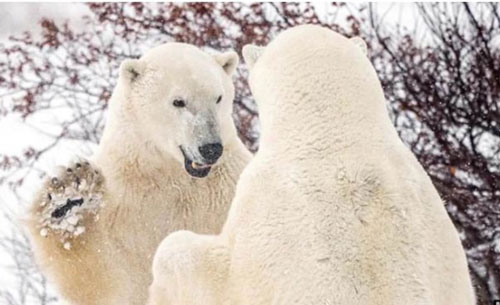Polar bears are disappearing fast from the Western part of Hudson Bay, on the southern tip of the Ca-nadian Arctic, according to a new government sur-vey.
The number of female bears and cubs in particu-lar has seen a dramatic decline. Researchers have flown over the region — which includes the town of Churchill, a tourist destination touted as the “polar bear capital of the world” — every five years to count the number of bears and extrapolate population trends.
During the last survey in late August and early September 2021, the results of which were released earlier this month, they spotted 194 bears and, based on that count, estimated a total population of 618 bears, down from 842 five years earlier.
“Comparison to aerial surveys estimates from 2011 and 2016 suggests that the WH (Western Hud-son Bay population) may be decreasing in abun-dance,” the study said.
It also “revealed significant declines in the abundance of adult female and subadult bears (cubs) between 2011 and 2021.”
“The observed declines are consistent with long-standing predictions regarding the demographic effects of climate change on polar bears,” the re-searchers said.
They also cited possible displacements of bears to neighbouring regions and hunting for the popula-tion decline.
The bears’ sea-ice habitat has been disappearing at an alarming rate, with the far north warming up to four times faster than the rest of the world.
The sea ice has become less thick and is breaking up earlier in the spring as well as freezing later in the fall.
The bears rely on the ice for foraging for seals, movement and reproduction. Since the 1980s, the ice pack in the bay has decreased by nearly 50% in summer, according to the US National Snow and Ice Data Centre.—AFP










